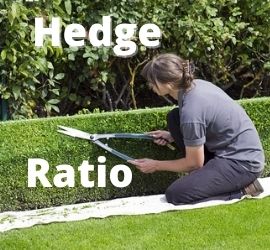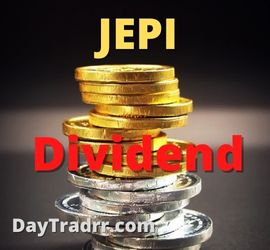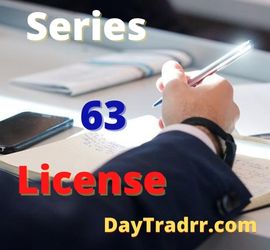Quad Witching – What Is Quadruple Witching Day?
 Quad witching refers to a date that occurs four times each calendar year. On quadruple witching days, stock index futures, stock index options, stock options, and single stock futures expire simultaneously. While stock options contracts and index options expire on the third Friday of every month, all four asset classes expire simultaneously on the third Friday of March, June, September, and December.
Quad witching refers to a date that occurs four times each calendar year. On quadruple witching days, stock index futures, stock index options, stock options, and single stock futures expire simultaneously. While stock options contracts and index options expire on the third Friday of every month, all four asset classes expire simultaneously on the third Friday of March, June, September, and December.
Quad witching is now often used interchangeably with the term triple witching days. Quadruple witching days replaced triple witching days when the fourth class of assets was included. Single stock futures started trading in November 2002. Before 2002, when stock futures were first introduced, the third Friday of March, June, September, and December was known as a triple witching day. And, this term is still used by some. In any case, all four asset class options and futures contracts expire on the same triple witching schedule. As a result, the terms “triple witching” and “quad witching” refer to the same four days each calendar year.
Double Witching vs Quad Witching
The terms quad witching and triple witching days tend to be interchangeable. However, double witching days are distinct. They occur on the third Friday of each of the remaining eight months of the year. The term “double witching” refers to the fact that only two types of financial contracts expire at the same time. Quadruple, triple, and double witching all derive their names from the potential havoc with increased volatility. Spikes in trading volume and volatility occur when all of these derivative assets expire on the same day.
The term is borrowed from folklore. Supernatural entities are thought to walk the earth during the witching hour of midnight in mythology. Being out at this time brings misfortune and ill luck to individuals who are unlucky enough to come into contact with these wicked spirits.
Quad witching – Types of Contracts Involved
Here are the four classes of contracts involved on quad witching days.
Options Contracts
Options are derivatives, which means their value is determined by underlying securities such as stocks. These contracts provide a buyer with the opportunity, but not the obligation, to finalize a transaction involving the underlying securities. However, the trader must complete the transaction on or before a specific date and for a predetermined price known as a strike price. For example, a call option can be acquired to bet on a rise in the price of a certain stock. If the price is greater than the strike price on the expiration date of the option, the investor can exercise or convert to stock shares and cash out for a profit.
Conversely, a put option allows an investor to profit from a drop in the price of a stock as long as the price is lower than the strike on expiry. Options contracts expire on the third Friday of each month. Also, there is an initial cost or premium to acquire or sell an option.
Index Options
An index option is similar to a stock option contract. However, instead of purchasing individual stocks, index options provide investors with the right, but not the obligation, to trade against the index. For example, the S&P 500. The profit on the transaction is determined by whether the index price or value is higher or lower than the option’s strike price on the expiration date. Index options do not provide ownership of particular stocks. Instead, the transaction is completed in cash. The amount is the difference between the option’s strike and the index value at expiry being paid out.
Single Stock Futures
Futures contracts are legal agreements to acquire or sell an item at a certain price at a later date. These contracts are standardized in that they have predetermined amounts and expiration dates. Futures contracts are traded on a futures exchange. A futures contract obligates the buyer to purchase the underlying asset at expiration, while the seller is bound to sell at expiry. Single stock futures are contracts that obligate the buyer to deliver shares of the underlying stock on the contract’s expiration date. Each contract represents one hundred shares of stock. However, stock futures holders do not get dividend payments. Dividends are cash payments made to shareholders from a company’s earnings.
Index Futures
Index futures are comparable to stock futures. Investors purchase or sell a financial or stock index through a contract that settles on a future date. The current position is offset after expiry, and a profit or loss is cash-settled into the investor’s account. Index futures are used by investors to speculate on the direction of an index. For example, purchasing if they feel the index will climb and selling if they believe the market will fall. Index futures can also be used to hedge a stock portfolio. This prevents a portfolio manager from having to liquidate the portfolio during market falls. Instead, the futures contract makes money while the portfolio loses money. The objective is to keep short-term portfolio losses to a minimum for long-term holding gains.
Quad Witching – Market Impact
Trading volume is high on quadruple witching days. Profitable options and futures contracts settle automatically with offsetting transactions. This is one of the key causes for the increasing activity. In-the-money call options are profitable when the underlying security’s price is greater than the strike price in the contract. When the stock or index is trading below the strike price, put options are in the money. In both cases, the expiration of in-the-money options results in automated transactions between the contracts’ buyers and sellers. As a result, quadruple witching dates result in an increase in the number of these transactions performed.
The following week of a quad witching day, market indexes such as the S&P 500 tend to fall. One explanation is due to the exhaustion of short-term demand for equities. Despite the general increase in trading volume, quadruple witching days do not always imply high volatility. Volatility is a measure of how much a security’s price fluctuates. Long-term institutional investors, such as pension fund managers, may be unaffected. This is because they do not often adjust their long-term investments. In addition, there is a range of hedging instruments available with numerous expiration dates throughout the year. This has also considerably mitigated the impact of quadruple witching days.
Closing and Rolling Out Futures Contracts
On triple witching days, most of the volume in futures and options is centered on offsetting, closing, or rolling out positions. A futures contract is an agreement between the buyer and seller. Ultimately, the underlying security is to be delivered to the buyer at the contract price at the time of expiration. Consider Standard & Poor’s 500 E-mini contracts, for example. These are 20% the size of the normal contract and are priced by multiplying the index price by 50. If a contract priced at 2,200 is left open upon expiration, the value is $110,000. This amount is delivered to the contract owner.
Contract owners do not accept delivery on the expiration date. Instead, they can close their contracts by registering an offsetting trade at the prevailing price. In this manner, they can settle the gain or loss from the buy and sell prices. Traders can also roll the contracts forward. They do this by offsetting the existing position and simultaneously booking a new option or futures contract to be settled in the future.
Quad Witching Arbitrage Opportunities
Throughout the length of a quadruple witching day, there are transactions involving huge blocks of contracts. This spike in volume can cause price swings, giving arbitrageurs the opportunity to profit from momentary price distortions. Arbitrage activity can even further increase trading volume. Especially when high-volume round trips are repeated numerous times during trade on quadruple witching days. However, just as activity might give the possibility for rewards, it can also swiftly lead to losses.
Pros
- Arbitrage opportunities – Quadruple witching may provide arbitrageurs the opportunity to profit on temporary price distortions.
- Potential market upswing – Increased trading activity and volume happen on witching days, which can lead to gains in the market.
Cons
- Gains tend to be modest – There is little evidence that quadruple witching leads to increased profitability since market gains are usually modest.
- Equal potential for losses – Increased volatility can offer the potential for gains, but losses can be equally evident.
Quad Witching Day Example – March 15, 2019
Friday, March 15, 2019, was 2019’s first triple witching day. During that week, market activity soared due to the excitement coming up to Friday. However, it is unclear if the witching event would result in larger market gains. This is because it is impossible to disentangle gains due to expiring options and futures from gains due to other variables such as earnings and economic developments. According to Reuters, trade activity on U.S. stock exchanges on March 15, 2019, was:
“10.8 billion shares, compared to the 7.5 billion average… for the prior 20 trading days. The Dow Jones Industrial Average rose 138.93 points, or 0.54 percent, to 25,848.87, the S&P 500 gained 14 points, or 0.50 percent, to 2,822.48 and the Nasdaq Composite added 57.62 points, or 0.76 percent, to 7,688.53. The S&P 500 posted its best weekly gain since the end of November and Nasdaq had its best weekly gain so far this year. For the week, the S&P 500 was up 2.9 percent, the Nasdaq was up 3.8 percent, and the Dow was up 1.6 percent.” (Source: reuters.com)
Quad Witching – Frequently Asked Questions
What Is Quad Witching and Why Is It Quadruple?
The “witching hour” is a magical time of day when terrible things may be going on, according to legend. This term has been adopted informally in derivatives trading to refer to the hour of contract expiry. Once each quarter, four separate types of contracts expire at the same time on quadruple witching day. These are the listed index options, single-stock options, index futures, and stock futures.
When Does Quad Witching Day Occur? When is the Witching Hour?
Quadruple witching days usually occur on the third Friday of March, June, September, and December. The witching hour is the final hour of trading leading to the market close at 4:00 pm ET.
Why Do Traders Care About Quad Witching Days?
Several classes of derivatives contracts expire at the same time. Often, traders will frequently try to close out all of their open positions before the expiration date. As a result, trade volume and intraday volatility may increase. Traders holding significant short gamma bets are more vulnerable to price swings in the run-up to expiry. Arbitrageurs attempt to profit from such irregular price movement, but this can also be dangerous.
What Are Some Price Abnormalities Observed on Quadruple Witching?
Traders will often try to close or roll over their holdings. Therefore, trading activity on quadruple witching is generally above normal, leading to even more volatility. However, as gamma hedging occurs, the price of a security may artificially drift toward a strike price. This is a practice known as anchoring the strike. Pin risk causes options traders to be unsure whether or not to execute their long options that have expired at or near the money. In general, investors are anxious about the price volatility of assets. However, their anxiety is only partially justified. Despite the fact that the number of securities traded increases roughly two-thirds of the time, price volatility occurs only about one-third of the time. Nevertheless, the number of contracts that expire and the positions that must be closed, rolled out, or offset can cause fluctuations in the value of the underlying securities.
Up Next: Aguinaldo Meaning
 Aguinaldo meaning: In Mexico and other Latin American countries, aguinaldo refers to an annual Christmas bonus. In Mexico, it is required by law. Aguinaldo is a term used in Mexico and other Latin American nations to refer to an annual Christmas bonus. It is required by law in Mexico. The payment, sometimes known as the thirteenth salary, must be made by December 20 of each year. Failure to make an aguinaldo payment may result in a punishment of up to 5,000 times the lawful daily minimum wage. Employers in other Latin American countries, such as Costa Rica, are likewise required to pay their employees an aguinaldo.
Aguinaldo meaning: In Mexico and other Latin American countries, aguinaldo refers to an annual Christmas bonus. In Mexico, it is required by law. Aguinaldo is a term used in Mexico and other Latin American nations to refer to an annual Christmas bonus. It is required by law in Mexico. The payment, sometimes known as the thirteenth salary, must be made by December 20 of each year. Failure to make an aguinaldo payment may result in a punishment of up to 5,000 times the lawful daily minimum wage. Employers in other Latin American countries, such as Costa Rica, are likewise required to pay their employees an aguinaldo.
Employers in Mexico are required by law to pay their employees a bonus or an aguinaldo once a year. This is in addition to their usual pay and benefits. Workers are entitled to an annual bonus in December that is the equivalent of at least 15 days’ wages. This is according to the law, which was established by legislation passed in 1970. An aguinaldo may be prorated for those employed for less than one year. Employers must withhold taxes from aguinaldos because they are subject to taxation. However, employees are not required to pay income tax on aguinaldo payments of up to 30 days of the lawful daily minimum wage. For example, if the minimum daily salary is $60 pesos, the aguinaldo’s tax-free value is $1,800 pesos, or $60 pesos x 30 days.




